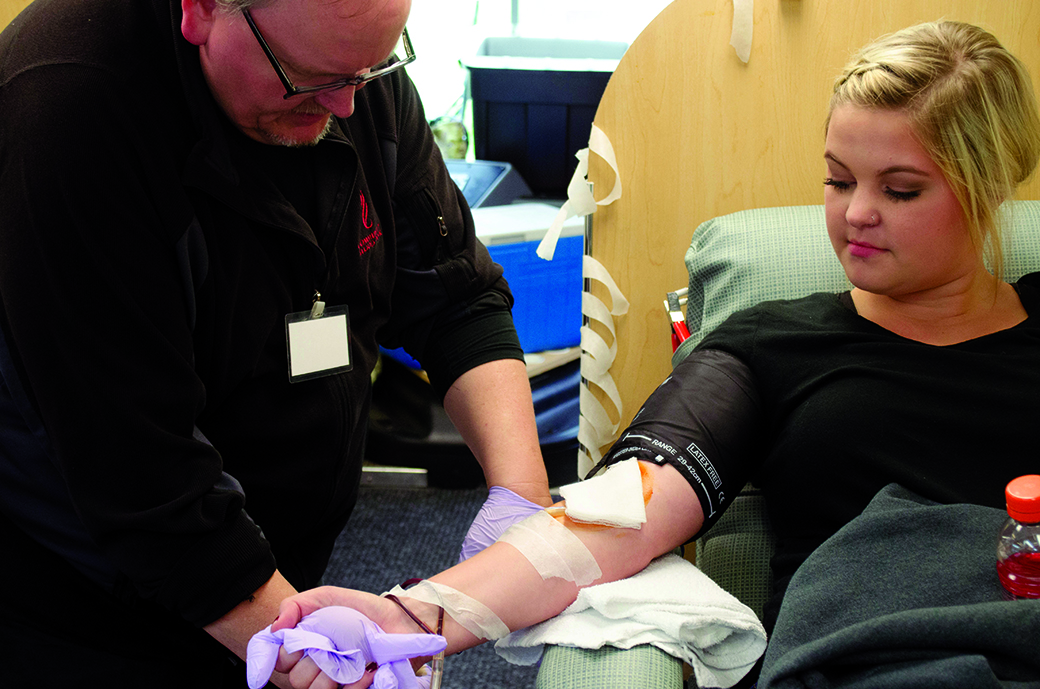
USD students give the ‘gift of life’ with 800 units of blood per year
By making a quick stop at a bus, USD students were potentially saving lives last week.
Sponsored by the Sioux Falls-based Community Blood Bank, the Oct. 5-6 blood drive saw a total of 90 participating students, which is “fairly average,” said Ken Versteeg, the executive director of the Community Blood Bank.
Community Blood Bank, which has been operating blood drives throughout the region since 1976, administers about 14 blood drives each year at USD. The blood drives at USD collect roughly 800 units of blood per year.
Versteeg said the 70 units of blood donated during last week’s blood drive saved as many as 210 lives.
“An individual donation could save up to three patients,” he said.
He also said the majority of donations by USD students will be kept local, destined for Sanford Vermillion.
“We try to keep the blood as local as possible,” he said.
As a joint cooperative organization run by Sanford and Avera Health, the blood collected by the group is generally used at Sanford or Avera-owned or affiliated hospitals in the region.
Though the Oct. 5-6 blood drive was sponsored by USD Greek Life, Versteeg said most are usually sponsored by the Student Serve Board.
While preparing to donate blood Oct. 6, first-year Max Seward said that donating blood is a simple, easy way to do good.
“It’s just something everybody should do,” Seward said. “It’s not too hard, it doesn’t take that much time out of your day, I mean, you could be saving a life, so what’s better than that?”
Sophomore Abbie Wiebers, who also gave blood Oct. 6, felt similarly.
“I think it’s important to donate blood, because there’s not really any hazards or anything and you’re helping people out in the process.” Wiebers said.
Though sophomore Emma Kays intended to donate blood Oct. 6, low levels of iron prevented her from doing so.
“I wasn’t able to donate blood,” she said. “It was kind of a bummer today, I’m low on iron.”
Iron deficiency is a fairly common reason for ineligibility to donate, Versteeg said, occurring in about 15 percent of people wishing to donate.
Versteeg said he recommends eating iron rich foods for three days prior to donation for those concerned about their iron levels.
Community Blood Bank worker Travis Anderson said Oct. 6 that the drive was going well.
“We’ve always had a really good response from you guys (USD),” he said.
Versteeg spoke positively of USD students’ generosity during blood drives, and of the virtues of giving blood.
“I encourage everybody to give the gift of life,” he said. “They are going to be saving lives within the community.”


